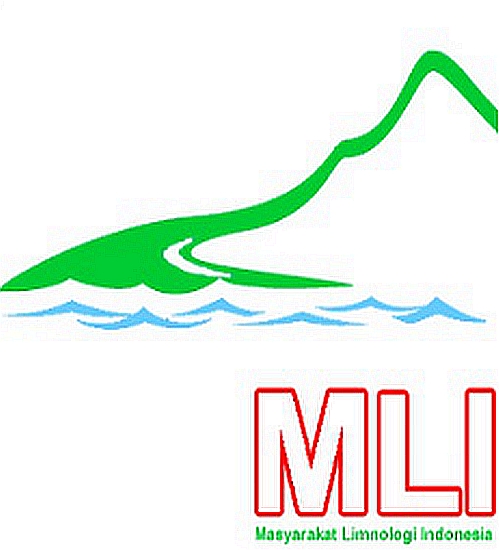PENGARUH WIND STRESS TERHADAP STRATIFIKASI SUHU HARIAN KOLOM AIR DANAU MANINJAU
Abstract
Stratifikasi suhu merupakan salah fenomena fisika yang terjadi di kolom air dan memiliki peranan penting dalam pengaturan proses kimia dan biologi di kolom air. Keadaan ini selanjutnya akan mempengaruhi kondisi ekosistem danau. Kekuatan stratifikasi suhu sangat bergantung pada perubahan intensitas radiasi matahari dan kecepatan angin. Melihat pentingnya peran stratifikasi suhu, maka dilakukan penelitian untuk mengkaji perubahan stratifikasi harian terhadap perubahan kecepatan angin yang spesifik dinyatakan oleh gaya tekan angin (wind stress) di Danau Maninjau, Sumatera Barat. Pengambilan data dilakukan selama tujuh hari (13 – 19 Februari 2017). Profil suhu kolom air diukur oleh rangkaian termistor yang dipasang pada alat e-most (Environmental Monitoring and Warning Systems) sampai kedalaman 60 m. Data kecepatan angin dan radiasi matahari diambil dari stasiun pengamatan cuaca Loka Alih Teknologi Penyehatan Danau (LATPD) Maninjau. Untuk melihat hubungan antara kekuatan stratifikasi dengan wind stress, dihitung indeks stratifikasi, wind stress dan energi kinetik turbulen (TKE). Indeks stratifikasi digunakan untuk mengkarakterisasi kekuatan stratifikasi suhu, sedangkan wind stress digunakan untuk memprediksi energi kinetik turbulen yang secara teori akan menurunkan stratifikasi. Hasil analisis menunjukkan bahwa terdapat gadien suhu kolom air yang ditandai oleh munculnya lapisan-lapisan isotermal mulai siang hari sampai menjelang malam dengan periode harian. Gradien suhu kemudian mulai menurun ketika malam sampai pagi hari, sehingga suhu kolom air menjadi lebih homogen dari permukaan sampai ke bawah. Telah diketahui adanya penurunan indeks stratifikasi harian kolom air pada saat wind stress dan energi kinetik turbulen bernilai tinggi, kemudian indeks stratifikasi meningkat saat wind stress dan energi kinetik turbulen mengalami penurunan. Sehingga terdapat hubungan terbalik antara wind stress dan indeks stratifikasi dengan koefisien korelasi sebesar -0,96.  Hal ini menunjukkan bahwa pada periode pengamatan tersebut wind stress berpengaruh besar terhadap proses pembentukan stratifikasi kolom air di Danau Maninjau.
Â
Thermal stratification is one of physical events in the column water which contributes so much to regulate chemical and biological processes in the water column. This event will further affect the condition of the lake's ecosystem. The strength of thermal stratification is very suitable with solar radiation and wind speed. Seeing the importance of the role of thermal stratification, a study was conducted to examine the changes in daily stratification to the wind speed changes which is specifically characterized by wind stress in Lake Maninjau, West Sumatra. Data collection was conducted for seven days (February 13-19, 2017). The temperature profiles of the water column were measured by a thermistor chain mounted on an e-most (Environmental Monitoring and Warning Systems) device to a depth of 60 m. Wind speed and solar radiation data were collected from the weather observation station of Loka Alih Teknologi Penyehatan Danau (LATPD) Maninjau. The stratification index, wind stress and turbulent kinetic energy (TKE) were calculated to see the relationship between stratification strength and wind stress. Stratification index is used to characterize the strength of thermal stratification, while wind stress is used to predict turbulent kinetic energy which in theory will reduce stratification. There is a water column temperature gadient which is characterized by the appearance of isothermal layers from day to night with the daily period. The temperature gradient then begins to decrease at night until morning, so the temperature of the water column becomes more homogeneous from the surface to bottom. There has been a decrease in the daily stratification index of the water column during the maximum peaks of wind stress and turbulent kinetic energy. The stratification index begins to increase when the wind stress and turbulent kinetic energy get the decrease. There is an inverse relationship between the wind stress and stratification index with a correlation coefficient of -0.96. This shows that during the period of observation the wind stress has a major effect on the process of forming water column stratification in Lake Maninjau.
Â
Keywords
Full Text:
PDFReferences
Ladd C, Stabeno PJ. 2012. Stratification on the Eastern Bering Sea shelf revisited. Deep Sea Research Part II: Topical Studies in Oceanography 65–70: 72–83. DOI: 10.1016/j.dsr2.2012.02.009
Lofgren BM, Zhu Y. 2000. Surface Energy Fluxes on the Great Lakes Based on Satellite-Observed Surface Temperatures 1992 to 1995. Journal of Great Lakes Research 26: 305–314. DOI: 10.1016/S0380-1330(00)70694-0
Magee MR, Wu CH. 2017. Response of water temperatures and stratification to changing climate in three lakes with different morphometry. Hydrology and Earth System Sciences 21: 6253–6274. DOI: 10.5194/hess-21-6253-2017
Rempfer J, Livingstone DM, Blodau C, Forster R, Niederhauser P, Kipfer R. 2010. The effect of the exceptionally mild European winter of 2006-2007 on temperature and oxygen profiles in lakes in Switzerland: A foretaste of the future? Limnology and Oceanography 55: 2170–2180. DOI: 10.4319/lo.2010.55.5.2170
Schindler DW, Beaty KG, Fee EJ, Cruikshank ER, DeBruyn ER, Findlay DL, Linsey GA, Shearer JA, Stainton MP, Turner MA. 1990. Effects of climatic warming on lakes of the central boreal forest. Science 250: 967–970
Stefan HG, Hondzo M, Fang X, Eaton JG, McCormick JH. 1996. Simulated long term temperature and dissolved oxygen characteristics of lakes in the north-central United States and associated fish habitat limits. Limnology and Oceanography, 1124–1135. DOI: 10.4319/lo.1996.41.5.1124
Tuan N V., Hamagami K, Mori K, Hirai Y. 2009. Mixing by wind-induced flow and thermal convection in a small, shallow and stratified lake. Paddy and Water Environment 7: 83–93. DOI: 10.1007/s10333-009-0158-x
Verburg P, Antenucci JP. 2010. Persistent unstable atmospheric boundary layer enhances sensible and latent heat loss in a tropical great lake: Lake Tanganyika. Journal of Geophysical Research Atmospheres 115: 1–13. DOI: 10.1029/2009JD012839
Yang Y, Colom W, Pierson D, Pettersson K. 2016. Water column stability and summer phytoplankton dynamics in a temperate lake (Lake Erken, Sweden). Inland Waters 6: 499–508. DOI: 10.5268/IW-6.4.874
Zhang, L and J. Russel. 2005. Modeling the heat flux and wind turbulence in Lake Tanganyika.geo.arizona.edu/nyanza/pdf/Zhang.pdf
DOI: http://dx.doi.org/10.14203/limnotek.v26i1.254
Refbacks
- There are currently no refbacks.
PUBLISHED IN COLLABORATION WITH

Copyright © 2015-2018, LIMNOTEK. All Rights Reserved. Powered by OJS.





